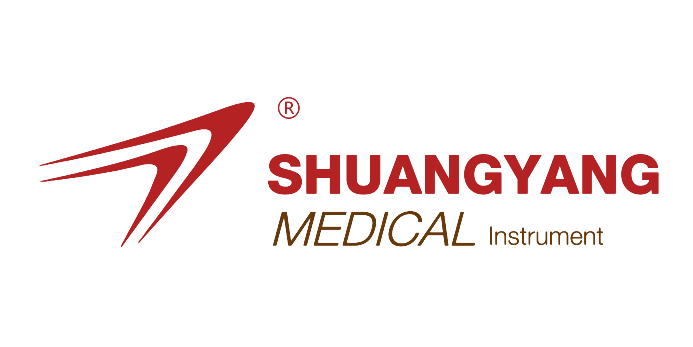Introduction
Maxillofacial trauma refers to injuries that impact the facial region, encompassing bones, soft tissues, and dental structures. These injuries are not only prevalent in active environments but also hold significant importance in the medical field due to their complex nature and potential impact on essential functions such as breathing, speaking, and chewing. For beginners, understanding maxillofacial trauma is crucial as it aids in recognizing symptoms and the necessary medical interventions. Given the intricate anatomy of the face and the role it plays in both functionality and appearance, having a strong foundation in this area is indispensable for anyone aiming to venture into related medical disciplines.
Top 10 FAQs: Maxillofacial Trauma for Beginners
What is Maxillofacial Trauma?
Maxillofacial trauma refers to injuries impacting the facial and jaw areas, vital for their role in safeguarding major sensory organs and maintaining facial aesthetics. These injuries can range from minor contusions to severe fractures and soft tissue damage. Common types include fractures of the jaw, cheekbone, or eye socket, as well as lacerations and nerve damage. The impact on functions like breathing, eating, and psychological well-being is profound, potentially altering a person's quality of life. Understanding these injuries aids in providing effective treatment and care.
How is Maxillofacial Trauma Assessed?
Assessment of maxillofacial trauma involves a systematic approach, beginning with a visual inspection and imaging techniques like X-rays and CT scans to outline the extent of injuries. A thorough patient history and physical examination are crucial, as they help determine previous health conditions that might affect treatment. Multidisciplinary teams, including maxillofacial surgeons, radiologists, and trauma specialists, collaborate to assess trauma severity and craft tailored treatment plans, ensuring comprehensive patient care.
What are the Common Causes of Airway Obstruction?
Airway obstruction in maxillofacial trauma can result from facial fractures, soft tissue swelling, and foreign body obstruction. For instance, in adults, road accidents or assaults might lead to such injuries, whereas in children, playing accidents leading to swelling or lodged objects are common. Studies indicate these complications account for a considerable percentage of emergency admissions, underlining the importance of prompt assessment and management to prevent life-threatening situations.
How is Airway Management Different in Maxillofacial Trauma?
Airway management in the presence of facial injuries presents unique challenges due to potential obstructions from displaced bone fragments or swelling. Techniques such as intubation or surgical airway creation are employed to secure patency. Swift and efficient airway management is vital, as failure can lead to severe complications, particularly in the trauma emergency context. Interdisciplinary collaboration ensures effective responses to maintain patient stability.
What are the Signs of Inadequate Ventilation?
Inadequate ventilation during maxillofacial trauma could manifest as cyanosis, indicating poor oxygenation, altered mental status, and irregular respiratory patterns. These signs demand immediate emergency care as they highlight disrupted respiratory function, which can escalate to critical conditions if not addressed. Monitoring equipment, such as pulse oximeters and capnography, plays a key role in early detection and guides interventions, ensuring timely medical response.
How is Circulation Assessed in Trauma Patients?
Assessing circulation involves checking vital signs such as pulse, blood pressure, and capillary refill, which indicate blood flow efficiency and overall circulatory health. Maxillofacial trauma can exacerbate circulatory issues by causing significant bleeding or impeding airway access. Maintaining hemodynamic stability is paramount in trauma settings, and interventions generally focus on stabilizing vital signs to support the body’s recovery processes while more specific treatments are administered.
What is the Role of the Glasgow Coma Scale (GCS)?
The Glasgow Coma Scale (GCS) is essential for assessing consciousness levels in trauma patients, playing a critical role in treatment decisions. A lower GCS score suggests severe brain injury, potentially altering the management of maxillofacial trauma where protective reflections are crucial. For example, a typical GCS score of 8 or below signals severe unconsciousness, prompting the need for immediate airway protection and possibly influencing surgical interventions to optimize recovery outcomes.
Why is Exposure and Environment Control Important?
Controlling the environment, including reducing patient exposure to cold or noise, profoundly affects recovery from maxillofacial injuries. A stable environment enhances patient comfort, reducing stress levels that can impede healing. Studies demonstrate that effective environmental management correlates with improved outcomes, emphasizing its significance alongside medical interventions. These strategies aid in nurturing a conducive healing space, accelerating recuperation and minimizing complications.
How are Facial Fractures Managed in the Initial Phase?
Initial management of facial fractures prioritizes stabilization, pain relief, and timely referral to specialized care. Imaging, often via CT scans, facilitates precise treatment planning, identifying fractures that require surgical intervention. Common initial surgical approaches include aligning and fixing the bones with plates and screws. This phase is crucial in minimizing further injury, ensuring that the probability of full function and aesthetic recovery is maximized.
What are the Key Takeaways for Beginners?
Beginners delving into maxillofacial trauma should focus on recognizing specific injury patterns and understanding the importance of rapid intervention. Timely treatments significantly affect outcomes, underscoring the necessity for ongoing education and training in trauma care. By continually advancing their knowledge, beginners can refine skills essential for managing such emergencies, ensuring readiness to provide effective and empathetic care for traumatically injured individuals.
Conclusion
Understanding maxillofacial trauma is crucial for both new and seasoned practitioners in fields such as oral and maxillofacial surgery. This knowledge aids in accurately diagnosing and treating injuries effectively. By comprehending the significance of maxillofacial injuries, professionals can ensure better functional and aesthetic outcomes for patients affected by such trauma.
Moreover, a proactive approach to ongoing education in maxillofacial surgery and trauma management is vital. As advancements continue to emerge in the medical field, staying updated with the latest techniques and research is imperative for practitioners. Continuous learning not only enhances one's skills but also ensures the delivery of optimal care to patients with maxillofacial trauma. Engaging in further training and keeping abreast with current practices helps in improving patient recovery and satisfaction.
FAQ
What is maxillofacial trauma?
Maxillofacial trauma refers to injuries that impact the facial region, including bones, soft tissues, and dental structures. It affects essential functions such as breathing, speaking, and chewing.
How is maxillofacial trauma assessed?
Maxillofacial trauma is assessed using visual inspections and imaging techniques like X-rays and CT scans, alongside patient history and physical examinations.
What are common causes of airway obstruction in maxillofacial trauma?
Common causes include facial fractures, soft tissue swelling, and foreign body obstruction, which may result from accidents or assaults.
How different is airway management in maxillofacial trauma?
In maxillofacial trauma, airway management involves addressing obstructions with techniques like intubation or surgical airway creation.
What signs indicate inadequate ventilation?
Signs of inadequate ventilation include cyanosis, altered mental status, and irregular respiratory patterns.
Table of Contents
- Introduction
-
Top 10 FAQs: Maxillofacial Trauma for Beginners
- What is Maxillofacial Trauma?
- How is Maxillofacial Trauma Assessed?
- What are the Common Causes of Airway Obstruction?
- How is Airway Management Different in Maxillofacial Trauma?
- What are the Signs of Inadequate Ventilation?
- How is Circulation Assessed in Trauma Patients?
- What is the Role of the Glasgow Coma Scale (GCS)?
- Why is Exposure and Environment Control Important?
- How are Facial Fractures Managed in the Initial Phase?
- What are the Key Takeaways for Beginners?
- Conclusion
- FAQ
 EN
EN
 FR
FR
 ES
ES
 AR
AR

